Pre-Production Review: 2013 Honda Accord – Part 2

Five days ago we released the first part of the 2013 Accord review. It’s not how we normally do things, but in order to get our hands on the second best-selling mid-size sedan in America we had to agree to keep you all in suspense. If you want to know about the new Accord’s drivetrain, interior and infotainment systems, click on over to part one and then head back here when you’re done. I promise we’ll wait for you.
Drive
The 2013 Accord is the first real foray into the CVT world for Honda. Yes, I know the Civic Hybrid and some GX models use a CVT, but they are low volume niche vehicles. Let me get one thing straight right off the bat. I love CVTs. The reason for my love-that-dare-not-speak-its-name, and the reason we find one under the hood of the new Accord is efficiency. For optimum efficiency, you want an engine to operate as close to its most efficient RPM as possible over a wide variety of speeds. For performance, you want to get the engine to its power band and keep it there as you accelerate. The problem of course has been that CVTs take a while to transition from one ratio to another which is a strange feeling if you are used to a transmission downshifting in milliseconds. Honda didn’t explain how, but somehow, the new Accord makes CVT ratio changes almost as fast as a traditional automatic. The difference behind the wheel is dramatic. If you are cruising at 60MPH and you “floor” a Nissan or Audi CVT, you get nothing for a moment, then the car starts to accelerate slowly while the tach rises. Once the tach reaches a certain point, you get maximum acceleration. Lifting the pedal produces a moment where you’re still accelerating as the CVT readjusts, then you’re back to normal. Performing the same maneuver in the Accord is more like an automatic in that the transmission shifts to a lower ratio very rapidly and returns to the higher ratio without the “rubber band” effect when you’re done passing. Compared to Honda’s 5 or 6 speed autos, I’d take the CVT any day.
From a stand still, the 185HP, 2.4L engine motivatess the Accord respectably thanks to its low-end torque (181lb-ft at 3,900RPM) and the new CVT. If you live in a mountainous area like I do, the CVT has another benefit; when hill climbing the CVT constantly varies the ratios, allowing you to keep a more consistent speed than with a traditional automatic. As much as I love a CVT, the manual transmission would be my personal preference. Available on the base, LX, Sport and EX trims, the 6-speed manual is a typical Honda close ratio manual that is skewed to the shorter end of the ratio scale for performance. The relatively low-end torque of the 2.4L engine seemed very “un-Honda” but is a welcome change. In true Honda fashion, the small four cylinder sounded perfectly happy to rev high and keep the fun going.
The 278HP, 3.5L V6 from last year is back with some tweaks to improve fuel economy. The exhaust is tuned toward a decidedly sporty note that was pleasant without being overbearing. Honda’s new 6-speed automatic sends power to the front wheels only meaning the V6 torque-steers with the best of them. The revised cylinder management system proved to be seamless and effective easily allowing the V6 sedan to average 35MPG on a 20 mile highway trip. On the flip side, the V6 lacks the low-end torque that the latest 2.0L turbos provide and Honda’s 6-speed auto isn’t the most responsive automatic. What could Honda do with a 2.0L direct injection turbo and their new CVT? Let’s hope we find out some day.
If road holding is your game, then the Sport model is for you, primarily because of the rubber choices. Most of our day was spent behind the wheel of the base LX model whose firm suspension seemed at odds with its road holding ability. When it came time to swap into an Accord Sport, the reason for the deficiency was obvious. Base Accords get 16-inch, 205-width 65-series rubber. EX and Touring Accords are fitted with 215/55E17s while sport models share the 235/45R18s with the V6 Accord Coupe. Despite the loss of the Accord’s double-wishbone suspension, the new Accord had no problems corner-carving like a solid alternative to the Mazda 6. Road noise has dropped compared to the outgoing Accord, but it is still above some of the competition. Despite the new active noise cancelling system, the Accord is still louder on the road than the Camry and the latest eerily quiet Buicks.
Drive – 2014 Accord Hybrid
Not due out until mid 2013, Honda allowed me a long drive in a prototype 2014 Honda Accord Plug-In Hybrid. This new hybrid is a complete departure from everything that Honda has done in the past. Prior attempts at “hybridizing” the Accord were focused on adding some electric mojo to their V6 model for even more performance. This time around, Honda is aiming the Accord Hybrid and Plug-In Hybrid squarely at the Chevy Volt, Fusion Hybrid and Camry Hybrid and even the Toyota Prius.
The first thing to cover is the system’s operation. The Civic is often derided by Prius drivers because the engine can never be disconnected, so even in “EV mode”, the engine is spinning. The Accord takes this to the opposite extreme. Under 40 MPH, the engine is incapable of driving the car directly. At speeds below about 40MPH, motor two is driving the wheels drawing power from the lithium-ion battery pack or from the engine via motor one acting as a generator. At around 40MPH, the car may engage a clutch pack that directly connects motor one and motor two together allowing power to flow from the engine to the wheels. (Whether the car clutches the engine in or not depends on the battery’s state of charge). Once this clutch pack is connected the system is capable of delivering a combined power output of 196HP, and in EV mode it is limited to about 166HP.
If you’ve driven a Civic Hybrid, you know that the system is less than smooth from a wide variety of angles. Regenerative braking is grabby and strange, transitions between EV and hybrid modes are met with unrefined jerks and vibrations. Perhaps Honda’s biggest battle with the Accord will be in convincing shoppers to give the hybrid a chance. Honda’s larger traction motor and the ability to completely remove the engine from the drivetrain makes regenerative braking as smooth as any EV on the market. More surprising is the clutch engagement when the car enters hybrid mode. Despite my best attempts, the engagement was always perfectly seamless, making the Toyota Synergy Drive system seem rough in comparison. That’s something that cannot be said of the Infiniti M35h or the Hyundai/Kia hybrid system.
Out on the road the hybrid Accord drove more like the base LX model thanks to the low rolling resistance rubber and increased weight from the hybrid system. The suspension seemed to be tuned towards a softer ride than the other models -something I appreciated, if I can be candid for a moment. It wasn’t possible to get hard acceleration numbers for the Hybrid, but the “butt dyno” and the power figures indicate it should perform above the 2.4L and below the V6. I averaged a solid 42MPG in my 45-mile, hour long test drive of the Plug-In after the battery was exhausted.
Drive – Coupe
With the Solara gone from the market, the mid-sized volume coupé is a strange market to try to corner, but Honda is giving it the old college try. The Accord Coupé’s selling point is an enormous back seat. The back seat dimensions may make the coupé’s side profile a little unusual, but the increase in utility is impressive. Since the Coupé is only slightly shorter than the sedan with only a slight reduction in the wheelbase and just a few pounds shed, it drives pretty much like the sedan. The exception of course is the V6 model which can be equipped with a 6-speed manual transmission. Honda was cagey on what is different about the V6’s cog swapper, but the ratios seem to be different vs the four cylinder and the clutch action is firmer and more precise. If you’re going to opt for the coupé, keep in mind that aerodynamic differences reduce fuel economy numbers vs the sedan by 1-2MPG. In addition, the 6-speed manual equipped V6 looses the variable displacement system dropping highway economy by 6MPG to 28MPG. Oddly enough, I found the Accord sedan with the “Sport” package and the four cylinder engine to be a more enjoyable drive.
Honda has announced that the base LX model accord with the standard backup cam, 8-inch infotainment screen, 16-inch alloy wheels and dual-zone climate control will start at $21,640, or a modest $200 increase over 2012. Meanwhile, the top-of-the-line Touring model, which tosses in radar cruise control, LED headlamps, leather seats, dual exhaust, the V6, and all of Honda’s new active safety tech will set you back $33,430. Overall pricing is right in line with the competition, with the Hyundai/Kia ringing in lower and the Camry a bit more expensive if you account for the feature differences. Honda has yet to release pricing on the Accord Hybrid, but expect it to start around the same$27,500 neighborhood as the Camry and Fusion hybrids. Expect the plug in to command at least a $10,000 premium over the hybrid. It’s obvious that this 9th generation Accord has some serious competition ahead with the new Ford Fusion, but Honda hasn’t taken this lying down. The Accord has doubled down on interior comfort and value by jamming more electronic goodies in every model. Their new infotainment system is finally up to par being less attractive than MyTouch but far more responsive. Camry shoppers who are looking for something a bit more fun to drive would also do well to drop by the Honda dealer.
Honda paid for airfare and two nights at a swanky resort, travel expenses to the resort came out of my own pocket since I drove.

More by Alex L. Dykes
Latest Car Reviews
Read moreLatest Product Reviews
Read moreRecent Comments
- SilverHawk Growing up in California, I ran the Corkscrew in a number of different low power sports cars, but nothing really fast. I had a real blast doing it in a 66 Barracuda Formula S that I could barely handle through the curves. The car had more skill than I had. Quite an experience.
- Fred This is one car I never see anymore. Where did they all go?
- Daniel Bridger The increased cost of electricity is raging faster than the government's manipulation of ICE fuel.
- Zipper69 Why the choice of a four door shell.Packing this tech into Stinger would have been awesome.
- Eric I have no desire to have an EV. Too expensive, no charging facilities within 50 miles are even planned, unproven technology, arguably even more environmentally harmful than ICE vehicles. Besides being a status symbol and to signal virtue, what's to like?






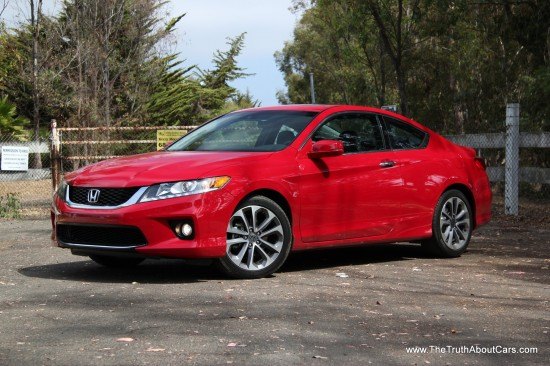





























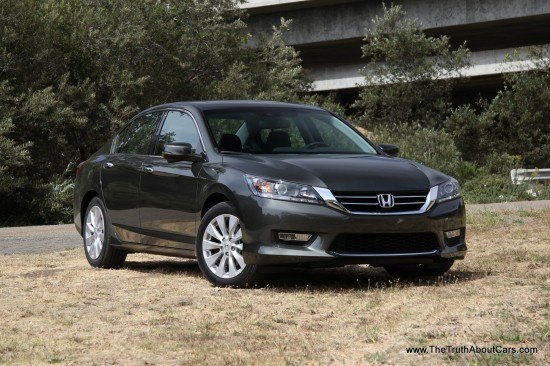

























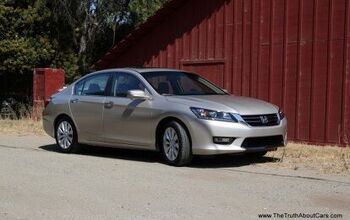
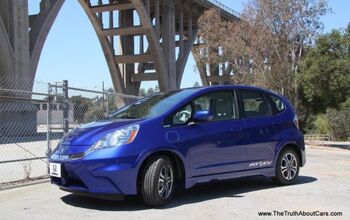







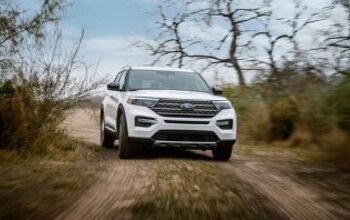





Comments
Join the conversation
Before you spend a lot of time on evaluating a Honda Accord or any Honda vehicle, make sure up front that you can live with the option package offered. Honda USA has very poor color choice options on the Accord coupe, especially the manual and is totally inflexible. For the manual four cylinder coupe, no EXL leather, EX only in black. Only three color options for the manual V-6. More color options are available on manuals in Canada then in the USA. Honda USA will not allow you to special order a color for a model even if that model's color is exported to Canada. No loyalty bonus for long term Honda owner to take a different model because of lack of color offering. Beware, Honda USA states it will not honor the manufacturer warrantee if you purchase it in Canada and bring it over to the United States. Granted few companies are still offering manuals but if Honda is going to offer them have a decent choice of colors available that includes those colors that are exported to Canada. Poor color choices and option packages guarantee a poor take rate. Probably only mechanical difference is the speedometer between the USA and Canada versions. Honda coupe sales are not likely to cannibalize sales from any other part of the company. My experience in ordering a Honda has really turned off to Honda management, especially marketing. I have purchased new three Honda Accords and have driven a Honda 25 out of my last 31 years. My opinion, Honda engineering is very good but Honda marketing is very poor and short sighted. When you by a car new, it virtually guarantees the manufacturer a sizeable income stream for a long time in terms of parts, service, and financing. For some reason Honda does not understand this.
Canadians do not get much in the way of colour choices either. I was looking at at 2015 CR-V and honestly, the base model suites my needs quite well, but it is only available in silver white or black. Even the mid range only adds one or two more options. The top trim EX model gets over 7 colour choices... The CR-Z only is available in white in canada. In the US, it can be had in 7+ colours.